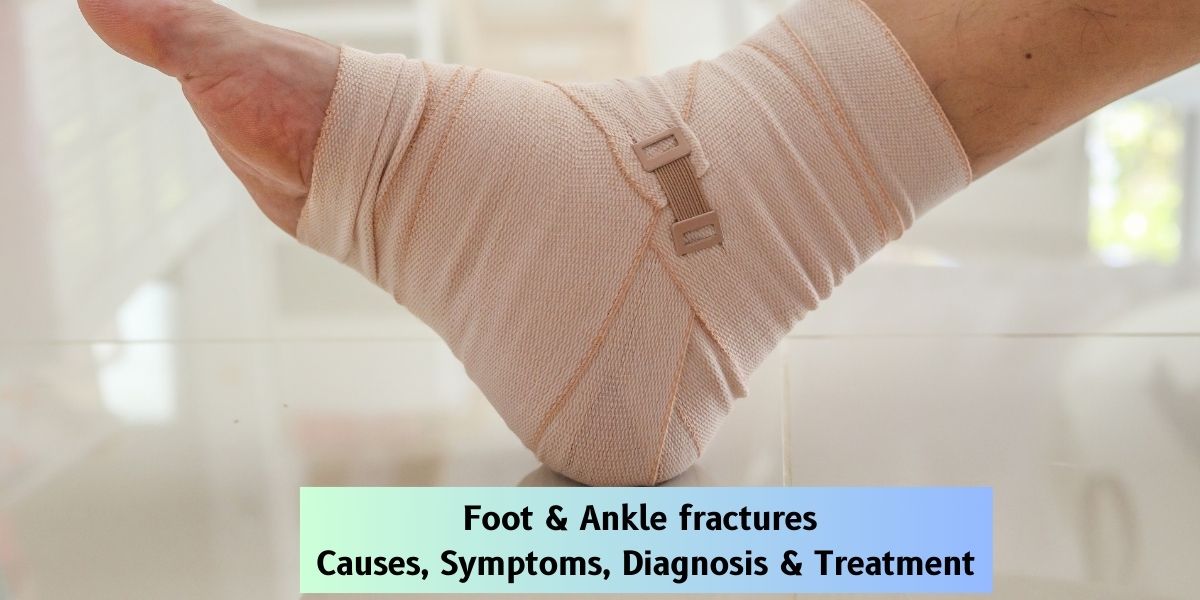Foot and ankle fractures can be incredibly painful and disruptive, affecting daily activities and overall quality of life. Understanding these fractures, their causes, symptoms, and treatment options is crucial for effective management and recovery. Whether you’re an athlete, a parent, or someone just looking to stay active, knowing what to do when a foot or ankle fracture occurs can make a significant difference in your healing process.
Understanding Foot and Ankle Anatomy
The foot and ankle are complex structures made up of numerous bones, ligaments, and tendons working together to support our body weight and enable movement. The ankle consists of three main bones: the tibia, fibula, and talus, while the foot contains 26 bones, including the tarsals, metatarsals, and phalanges. Each bone plays a vital role in maintaining balance, absorbing shock, and facilitating locomotion.
Common Causes of Foot and Ankle Fractures
Traumatic Injuries
One of the most common causes of foot and ankle fractures is traumatic injury, often resulting from falls, car accidents, or direct blows to the area. These injuries can happen to anyone, regardless of age or activity level.
Sports Injuries
Athletes are particularly susceptible to foot and ankle fractures due to the high-impact nature of many sports. Activities like basketball, soccer, and running put significant stress on the lower extremities, increasing the risk of fractures.
Overuse and Stress Fractures
Repetitive activities, especially those involving running or jumping, can lead to overuse injuries. Stress fractures are small cracks in the bone that occur over time due to continuous stress and insufficient rest.
Osteoporosis and Other Medical Conditions
Conditions like osteoporosis weaken the bones, making them more prone to fractures. Other medical issues, such as diabetes, can also affect bone health and increase the likelihood of fractures.
Symptoms of Foot and Ankle Fractures
Immediate Symptoms Post-Injury
The immediate symptoms of a foot or ankle fracture often include intense pain, swelling, and bruising. You might also notice deformity or an inability to bear weight on the affected limb.
Chronic Symptoms
If not treated promptly, foot and ankle fractures can lead to chronic pain, instability, and arthritis. Persistent symptoms should not be ignored and require medical attention.
Differentiating Between a Fracture and a Sprain
While both fractures and sprains can cause pain and swelling, fractures typically result in more severe symptoms and visible deformity. An X-ray is usually necessary to distinguish between the two.
Types of Foot and Ankle Fractures
Stress Fractures
These are tiny cracks in the bone often caused by repetitive force or overuse. They are common in athletes and military personnel.
Compound Fractures
Compound fractures, also known as open fractures, occur when the bone breaks through the skin. This type of fracture requires immediate medical attention due to the risk of infection.
Simple Fractures
A simple fracture, or closed fracture, means the bone is broken but does not pierce the skin. While less severe than compound fractures, they still require prompt treatment.
Complex Fractures
Complex fractures involve multiple breaks or shattered bones. These injuries often require surgical intervention and a longer recovery period.
Diagnosis of Foot and Ankle Fractures
Physical Examination
A thorough physical examination by a healthcare provider is the first step in diagnosing a foot or ankle fracture. This includes assessing the injured area for swelling, deformity, and tenderness.
Imaging Tests
To confirm the diagnosis, imaging tests like X-rays, CT scans, or MRI may be necessary. These tests provide detailed images of the bones and can reveal the extent and exact location of the fracture.
Importance of Accurate Diagnosis
Accurate diagnosis is critical to developing an effective treatment plan. Misdiagnosis or delayed diagnosis can lead to improper healing and long-term complications.
Immediate First Aid for Suspected Fractures
Steps to Take Immediately After Injury
If you suspect a foot or ankle fracture, it’s essential to immobilize the affected area and avoid putting weight on it. Applying ice can help reduce swelling and pain.
What to Avoid
Do not attempt to realign the bone or push a protruding bone back in place. Avoid applying heat to the injury, as it can increase swelling and pain.
Medical Treatment Options
Non-Surgical Treatments
Non-surgical options include immobilization with a cast or splint, rest, ice, compression, and elevation (RICE). These treatments are often effective for simple fractures.
Surgical Treatments
Surgery may be necessary for complex or compound fractures. Surgical options include the use of pins, screws, or plates to stabilize the bone and ensure proper healing.
Rehabilitation and Physical Therapy
Rehabilitation is a crucial component of recovery, involving physical therapy exercises to restore strength, flexibility, and mobility.
Recovery and Rehabilitation
Expected Recovery Timeline
Recovery time varies depending on the severity of the fracture and the treatment method. Simple fractures may heal in 6-8 weeks, while complex fractures take several months.
Rehabilitation Exercises
Rehabilitation exercises focus on improving range of motion, strengthening muscles, and enhancing balance. These exercises should be performed under the guidance of a physical therapist.
Importance of Following a Recovery Plan
Adhering to a prescribed recovery plan is vital for optimal healing. Skipping steps or rushing the process can lead to setbacks and prolonged recovery.
Prevention of Foot and Ankle Fractures
Tips for Preventing Fractures
Preventing foot and ankle fractures involves maintaining bone health through proper nutrition, regular exercise, and avoiding risky activities.
Importance of Proper Footwear
Wearing appropriate footwear that provides support and cushioning can significantly reduce the risk of fractures.
Strengthening Exercises
Incorporating exercises that strengthen the muscles and ligaments around the foot and ankle can help prevent injuries.
Impact of Foot and Ankle Fractures on Daily Life
Short-Term Impact
Foot and ankle fractures can limit mobility in the short term, making daily tasks challenging. Pain and swelling can also affect sleep and overall comfort.
Long-Term Consequences
Long-term effects may include chronic pain, arthritis, and reduced mobility. Some individuals may experience a permanent change in their gait or balance.
Emotional and Psychological Effects
Dealing with a fracture can be emotionally taxing, leading to feelings of frustration, anxiety, and depression. Support from friends, family, and mental health professionals is essential.
When to See a Doctor
Foot and ankle fractures are serious injuries that require prompt and effective treatment. Understanding the causes, symptoms, and treatment options can help you manage these injuries better. Whether it’s through proper first aid, medical treatment, or rehabilitation, taking the right steps can significantly impact your recovery. Preventive measures and regular check-ups with a specialist like Dr. Chetan Oswal – Provides Foot and ankle fracture treatment in Pune can help maintain foot and ankle health and prevent future fractures.





